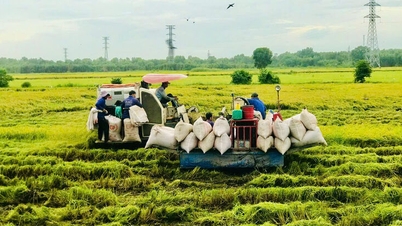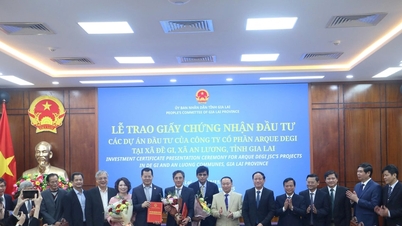(CLO) The year 2025 is approaching, posing many challenges and opportunities for the journalism industry. The question is how can newsrooms survive and develop in the context of rapid changes in technology and user habits?
Below are comments and predictions about trends and strategies for the future of journalism from media industry experts on the journalism website Journalism.co.uk:
Abandon scale, focus on users
One of the most important changes that newsrooms need to realize is that the strategy of pursuing large scale is no longer necessary. Instead, building deep relationships with readers is more urgent than ever.
Jonathan Heawood, CEO of the Public Interest News Foundation (PINF), said media organizations should focus on what they can control: "Building deeper relationships with audiences and being intimate with them."

Illustration: AI
Heawood also expects stronger action from three main sources: Government , big tech companies and philanthropy. He hopes the government’s communications strategy will focus on ensuring communities are informed and empowered by quality journalism, and encourage news providers to try new models, even if they fail. “Only by embracing failure will we find successful innovation,” he stressed.
However, Lexie Kirkconnel-Kawana, CEO of IMPRESS, expressed concern about the short-term vision haunting the journalism industry. She said that 2025 will continue to see financial challenges, short-term dependence on AI deals; as well as media organizations continuing to cut spending and invest in ancillary products, rather than focusing on improving content. She stressed the importance of "refocusing journalism standards and ethics to build engagement, relevance and value with readers".
Traditional press will be strongly renewed
Joshi Hermann, founder of Mill Media, predicts that traditional media will begin to “imitate” the successes of new media models, particularly podcasts and newsletters. He believes that the success of these formats lies in building “more intimate, more connected, more friendly” relationships with readers. He predicts “TV shows that look a little more like podcasts, articles that look a little more like newsletter introductions.”
Corinne Podger, a media development consultant, believes that 2025 will be “the year of the inbox.” She emphasizes the importance of maintaining a presence in the inbox of the audience through personalized newsletters that offer clear value. She gives the example of how newspapers solicit financial support via email, and emphasizes the need to convince readers of the value of contributing.
Personalize content and subscriptions with AI
Adriana Lacy, a media consultant, predicts the rise of AI-powered personalized subscription models, similar to Netflix and Spotify. She believes that AI will help analyze user data to provide highly personalized experiences. "By 2025, personalization will move from 'nice to have' to 'must have,'" she notes.

Lisa MacLeod - Director and Head of EMEA, FT Strategies. (Photo: Mark Hakansson)
Lisa MacLeod, Director and Head of EMEA at FT Strategies, believes that “registration is key.” She points to the importance of “unveiling” users through account creation, which increases user value and collects user data.
She cites figures from the FT and The New York Times showing higher conversion rates for paid subscriptions among registered users, and concludes that 2025 will be the year strategies should focus on “the best possible user experience.” She also cites Meera Patni, global head of direct media and journalism at Semafor, on the shift in trends from prioritizing scale to “caring for high-value readers.”
Increase value so readers pay for news
Thomas Baekdal, a media consultant, said the focus is on advertising and why readers pay for news. He said the shift to first-party advertising is increasingly important and publishers need to focus on “news that is meaningful, useful and relevant to our returning audiences.”
He pointed to the low rate of people paying for news in the UK and said publishers needed to focus on improving the quality of news and engaging readers directly. He also dismissed the over-focus on TikTok or using AI to produce poor quality content.
Therefore, according to experts, 2025 promises to be a challenging but equally interesting year for the journalism industry. Focusing on users, building relationships, innovating models, personalizing experiences and improving content quality are key factors for newsrooms to survive and develop in the future. Experts agree that changing mindsets and adapting to new trends are prerequisites for success in an increasingly competitive media landscape.
Hoa Giang ( according to Journalism )
Source: https://www.congluan.vn/du-bao-ve-bao-chi-nam-2025-dang-ky-ca-nhan-hoa-ai-va-tap-trung-vao-nguoi-dung-post327209.html














































































































Comment (0)